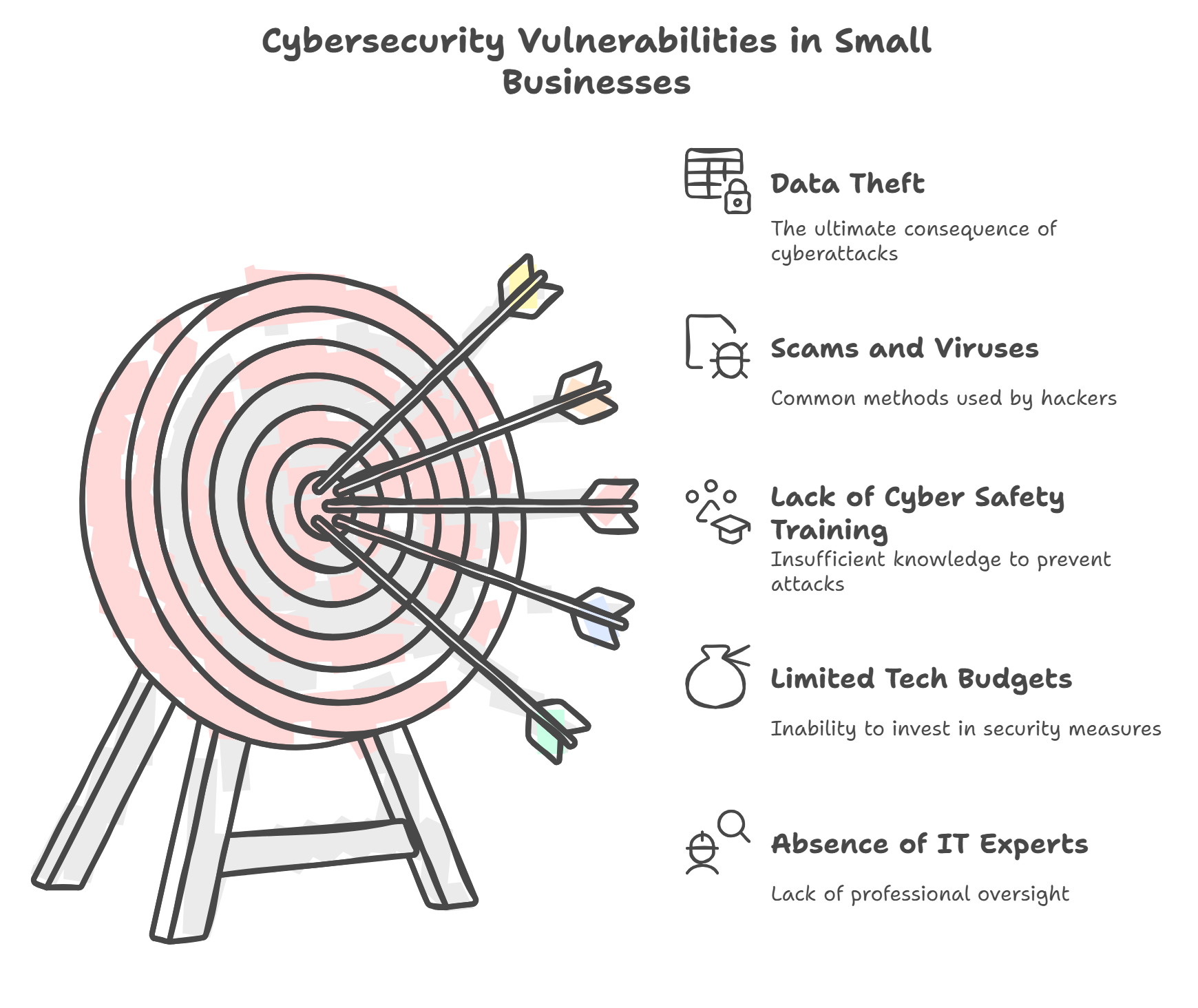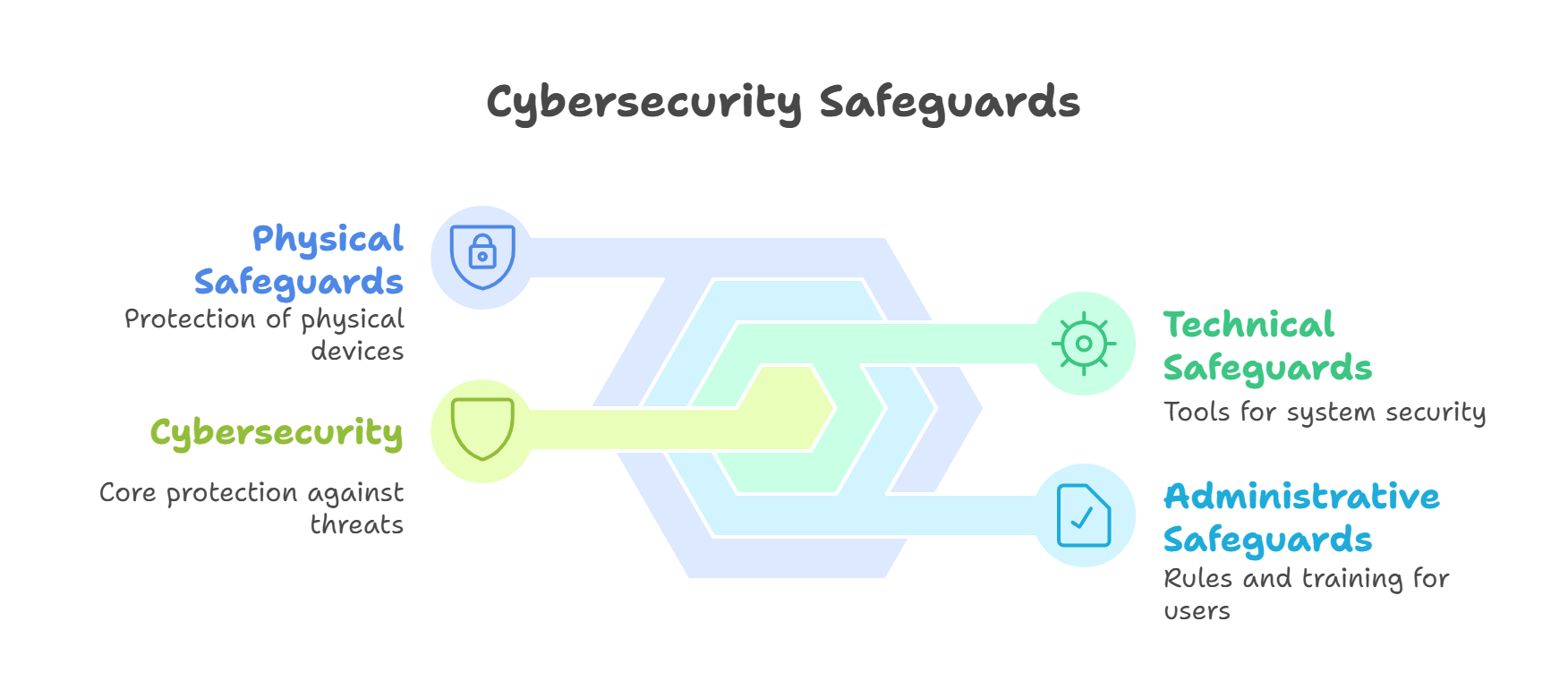Cybersecurity isn’t just for big companies. Small businesses also face online dangers. If you own a small business, you need to keep your data, your team, and your customers safe.
Many small business owners think hackers only target big names. That’s not true. Small businesses are often easier to attack because they don’t have strong protection.
This guide will teach you simple steps to stay safe online. You don’t need to spend a lot of money. We’ll show you how, give real examples, and answer common questions.

Why Cybersecurity Matters For Small Businesses
Small Businesses Are Easy Targets
Hackers often go after small businesses. Why? Because many don’t have:
-
IT experts
-
Big tech budgets
-
Cyber safety training
This makes them easy targets for scams, viruses, and data theft.
A Data Breach Can Be Expensive
Small businesses collect a lot of private data, like:
-
Customer names and addresses
-
Bank and card details
-
Business documents
If someone steals this, you could lose money, trust, and even face legal trouble.
Core Cybersecurity Basics for Small Business
The CIA Triad
Cybersecurity is built on three simple ideas:
-
Confidentiality: Only the right people can see your data.
-
Integrity: No one can change your data without permission.
-
Availability: You must be able to access your data when needed.
Check Your Risks
Ask yourself:
-
What data do I collect?
-
Where is it saved?
-
Who can see it?
-
What happens if it’s stolen?

Smart Cybersecurity Steps
We’ll split actions into 3 groups: Technical, Administrative, and Physical.
A. Technical Safeguards
These tools keep your systems safe.
-
Install Antivirus Software
Stops viruses, spyware, and other threats. -
Use Firewalls
Firewalls check your internet traffic and block danger. -
Encrypt Your Data
Turn your files into code so no one else can read them. -
Keep Software Updated
Updates fix bugs and close security holes.
B. Administrative Safeguards
These are the rules and training for your team.
-
Create Simple Cyber Rules
Set clear rules about:
-
Passwords
-
Remote work
-
Personal devices
-
Train Your Team
Teach your team to:
-
Spot fake emails
-
Avoid odd links
-
Report issues fast
-
Limit Access
Only give access to what each person needs.
C. Physical Safeguards
Protect your actual devices too.
-
Lock Computers and Devices
Use locks or cables. If possible, use cameras. -
Keep Server Rooms Safe
Only allow trained people to enter.
Make Your Cybersecurity Plan
Step 1: Find Your Risks
List your data, how it enters your system, and possible dangers.
Step 2: Know What To Protect
Decide what matters most, like:
-
Customer trust
-
Payment info
-
Business secrets
Step 3: Pick Your Tools and Rules
Choose what fits your budget:
-
Two-step login
-
Strong passwords
-
Regular backups
Step 4: Teach Your Team
Everyone needs to know the basics—yes, even the boss!
FAQs About Cybersecurity for Small Businesses
Q1: Why do hackers go after small businesses?
Because small businesses often don’t have strong protection.
Q2: What’s the most common cyber attack?
Phishing. That’s when someone sends a fake email with a bad link.
Q3: How much should we spend on cybersecurity?
Try to spend 3–5% of your tech budget. Start small and grow.
Q4: Do we really need rules for cyber safety?
Yes. Simple rules help everyone stay safe.
Real Cost of a Data Breach
Let’s say you have:
-
5,000 customer records
-
Each one costs $165 to fix (based on IBM data)
Total Cost: 5,000 × $165 = $825,000
That’s a huge loss for a small business!


